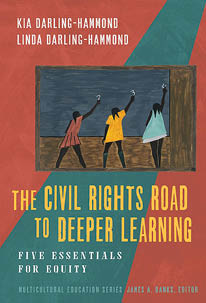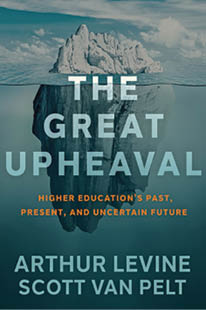Syllabus: March 2023

Resisting Asian American Invisibility: The Politics of Race and Education
Resisting Asian American Invisibility: The Politics of Race and Education (Teachers College Press) by Stacey J. Lee chronicles the ethnographic research surrounding both the invisibility and hypervisibility of America’s Hmong population. The book, which focuses on the world’s third-highest population of Hmong in the state of Wisconsin, examines how many Asian students are victims of mis-ethnicization (e.g., being mistaken as Chinese instead of Hmong), which results in the invisibility of whole cultures. When students do not feel seen and heard, they don’t feel connected to the education space, which can negatively impact their learning. Lee specifically discusses the organic formation of community agencies to support Hmong students in the public school system. In reading this book, school leaders will be reminded of the crucial connections between educational entities and social community groups and the need to foster them. Lee also highlights the importance of focusing on culturally sustaining practices in our schools. By honoring their history and culture, we can see our students for who they really are and help them build successful futures.
—Brian Cox
Principal, Johnson Junior High School, Cheyenne, WY

If You Only Knew: Letters from an Immigrant Teacher
Do we really know the struggles immigrant students face? In Emily Francis’ book If You Only Knew: Letters from an Immigrant Teacher (Seidlitz Education), the author shares her experience as an undocumented, unaccompanied child sent to the United States from Guatemala. In these letters to eight students, school leaders will quickly become aware of the loneliness, fear, confusion with a new language, and a lack of confidence that immigrant students often experience—the same struggles Francis faced as an English language learner (ELL) in New York City. As a high school ELL teacher, the author stresses just how important student-teacher relationships are for students new to the U.S. She also explains how she drew from her own challenges as a young immigrant to support students in the classroom. Not only will school leaders gain an awareness of ELLs’ struggles and successes, but they will also learn multiple strategies that Francis suggests for easing students’ stress and frustration so their true talents can surface.
—Eric Basilo, EdD
Assistant Principal, Markham Woods Middle School, Lake Mary, FL

The Civil Rights Road to Deeper Learning: Five Essentials for Equity
In The Civil Rights Road to Deeper Learning: Five Essentials for Equity (Teachers College Press), authors Kia Darling-Hammond and Linda Darling-Hammond discuss how the disparities in public education exacerbated by the pandemic underscore the need for a more creative, diverse, and collaborative U.S. workforce to produce a stronger economy. The authors implore us to examine how a modification of present classroom practices can have a positive impact on securing the upward mobility of American society. Challenging us to see deeper learning or higher-order thinking skills as a necessity for all students rather than for the affluent or elite class, the Hammonds produce a compelling argument using statistics and research evidence from case studies. Drawing on the progress made during the Civil Rights era, the authors suggest that equity can be achieved when we as a society seek to eradicate gaps in learning and childhood poverty, ultimately lifting us all. “If Hispanic and African American student performance grew to be comparable to white performance and remained there over the next 80 years, the … impact would be staggering—adding some $50 trillion to our economy,” the authors write. “This … represents the income that we forgo by not ensuring equity for all of our students.”
—Latrese Younger
Assistant Principal, Patrick Henry High School, Ashland, VA

The Great Upheaval: Higher Education’s Past, Present, and Uncertain Future
“He built an airplane from a horse cart while flying it.” Such was the characterization of Charles William Eliot, president of Harvard University from 1869–1909, as his reform efforts helped lead to the creation of the modern research university. Throughout the COVID-19 pandemic, many principals may have said the same thing about themselves. This quote is just one of several sure to resonate with school leaders in The Great Upheaval: Higher Education’s Past, Present, and Uncertain Future (Johns Hopkins University Press) by Arthur Levine and Scott Van Pelt. Levine, president emeritus of Columbia University’s Teachers College, and Van Pelt, associate director of the Wharton Graduate Communication Program at the University of Pennsylvania, discuss the historical foundations of American higher education, along with its current and future context and the challenges that lie ahead. Divided into three distinct sections of “looking backward,” “looking forward,” and “looking sideways,” the book explains how powerful forces of demography, economic needs, and technology are changing the face of education in “an age of continuity and experimentation” where “the present cannot be sustained.”
—Eric Fox
Assistant Principal, Jenks High School, Jenks, OK
